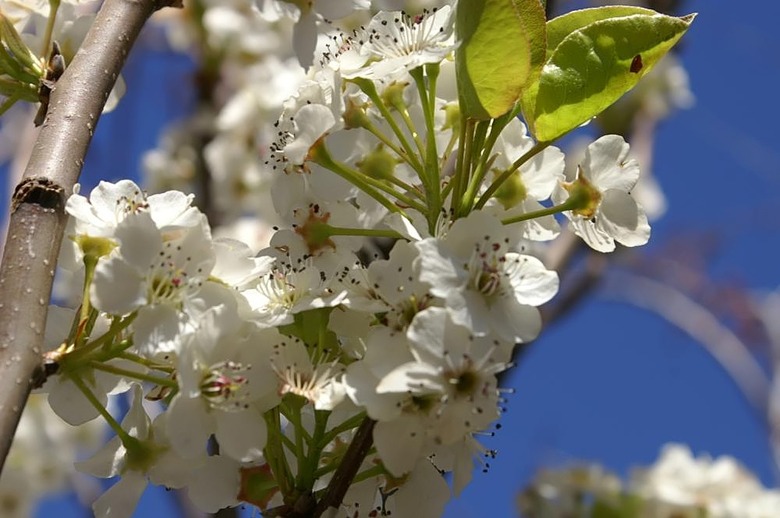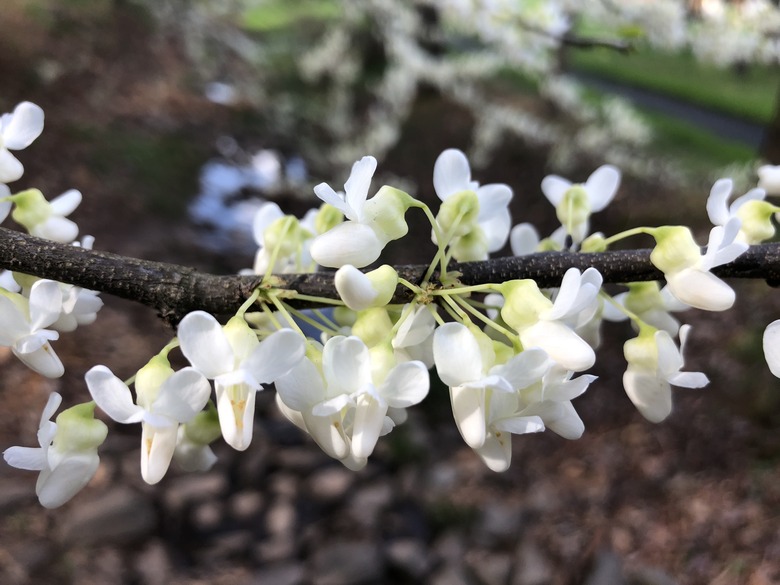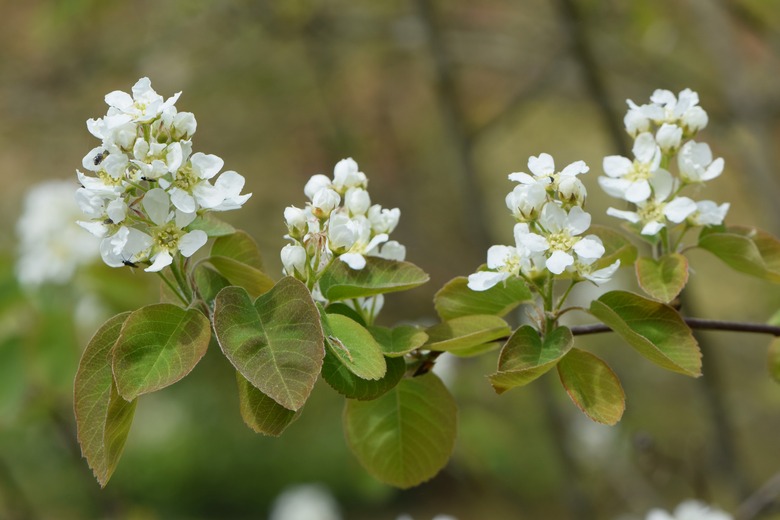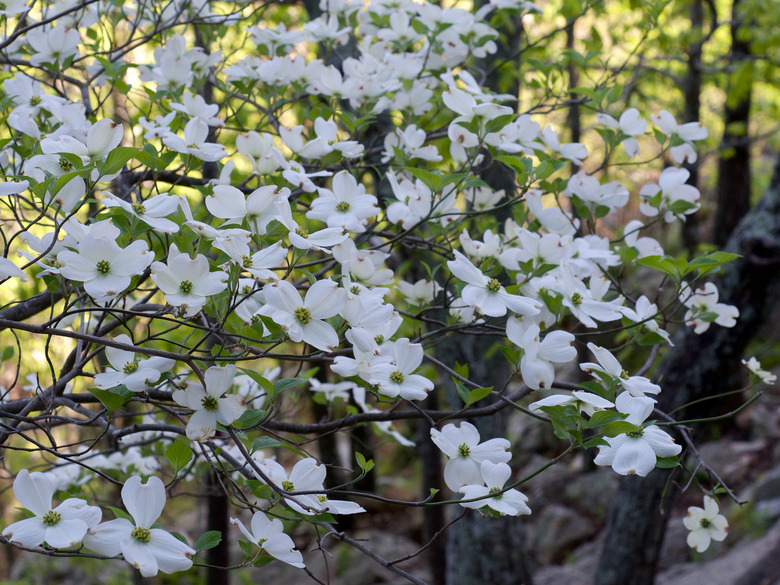About Flowering Pear Trees
The ornamental pear is a problematic tree. If you have one in your yard, consider replacing it. If you find one in a nursery, it may be offered by a rogue or uninformed vendor, because this tree (Pyrus calleryana) is banned in many states due to its invasive nature.
Also called a callery pear, the flowering pear was introduced from Asia, where it was initially prized as a desirable, ornamental tree in the landscape, producing stunning clusters of white flowers in spring. A pleasant oval-shaped form and a fast growth rate contribute to its attraction.
Growing in USDA hardiness zones 5 to 9, some common varieties include the Bradford pear tree (P. calleryana 'Bradford') and the Cleveland Select (P. calleryana 'Cleveland Select').
The Ornamental Pear in the U.S.
This tree was intentionally introduced into the United States in the early 1900s with the idea that it would cross-pollinate with existing fruiting pear trees and help them develop resistance to fire blight.
However, once its outstanding spring bloom was noticed, it began to be cultivated for home gardens in the 1950s. During the '60s through the '90s, this tree was planted far and wide.
The ending is not pretty, however. Flowering pear trees have an unsavory smell that some compare to rotten fish, but even worse, cross-pollination created callery pear varieties with viable seeds, and birds and other wildlife spread the seed.
The resulting varieties are super hardy, and many have sharp thorns up to 4 inches long. They leaf out in early spring and shade many native plants, and they form dense thickets.
These thorny, dense blocks of foliage prevent wildlife from foraging, and the thorns easily pop the tires of farm equipment.
Warning
Several states have banned the planting and selling of any variety of Pyrus calleryana. If you are thinking of planting this tree, consider alternative ornamental trees.
Alternatives to the Ornamental Pear
Here are some alternatives if your landscape is crying out for a spring-flowering ornamental tree and white blossoms are at the top of your wish list.
White Eastern Redbud
While the eastern redbud (Cercis canadensis) is a pinkish-purple flowering tree, there is a white-flowering cultivar (Cercis canadensis var. alba). The redbud reaches a mature height of 20 to 30 feet and a spread of 25 to 35 feet. It grows in USDA hardiness zones 4 to 9.
This tree is an excellent choice to replace a flowering pear. It's low maintenance and can be planted as a specimen tree in the landscape. Plant it in full sun to partial shade in well-draining soil.
Serviceberry
The serviceberry (Amelanchier spp., zones 2 to 8) is a small tree or large shrub that reaches from just 4 feet to 25 feet in height, depending on the species, with a spread of 4 to 15 feet.
It can be grown as a multi-trunked tree or pruned to a single trunk. It blossoms in mid to late spring, followed by small, edible fruits that can be made into jams or cooked in pies.
You can plant it in full sun or full shade because it is very forgiving about its growing conditions—although if you are growing a cultivar for its fruit, more sun exposure is preferred. One of the best cultivars for fruit is the Saskatoon serviceberry (A. alnifolia), which grows as a flowering shrub reaching 6 to 9 feet in height.
Flowering Dogwood
A dainty tree widely considered among the most beautiful of the native American flowering trees, dogwood (Cornus florida, zones 5 to 9) blooms in early spring, usually just after the redbuds. Its blooms are tiny and inconspicuous, but they are surrounded by four creamy white bracts that resemble petals and are referred to as its flowers.
It has lovely fall color when its oval, green leaves turn various shades of red.
References
- North Carolina State Extension: Pyrus Calleryana
- The Ohio State University: Flowering Ornamental Pear – How Invasive Is It Really?
- NC State Extension: Callery Pear: 'Bradford' and Other Varieties and Their Invasive Progeny
- University of Minnesota Extension: Serviceberry
- Missouri Botanical Garden: Cercis canadensis f. Alba
- Missouri Botanical Garden: Cornus florida



